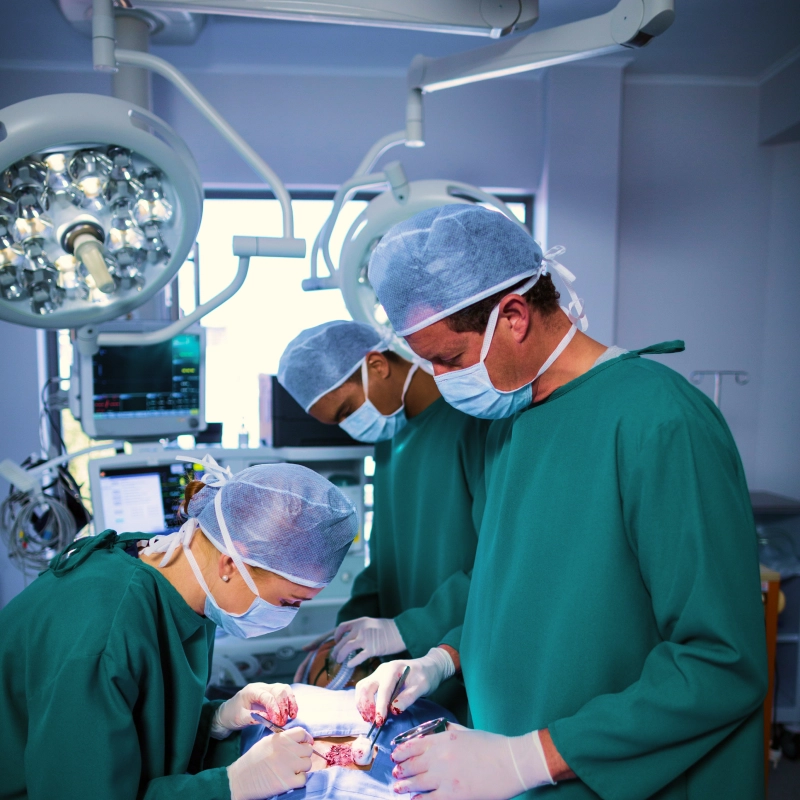
The field of medical science has been constantly evolving, embracing technological advancements to improve patient outcomes and surgical procedures. Robotic surgery, often hailed as a groundbreaking innovation, has garnered significant attention in recent years. Its promise of enhanced precision reduced invasiveness, and quicker recovery times has led to increased adoption in various medical specialties. But amidst the enthusiasm, a fundamental question arises: Is robotic surgery truly automated? In this blog, we will delve into the intricacies of robotic surgery, its automation levels, benefits, limitations, and its role in shaping the future of healthcare.
Understanding Robotic Surgery
Robotic surgery involves the use of advanced robotic systems to aid surgeons in performing complex procedures with enhanced precision. The da Vinci Surgical System, one of the most well-known examples, comprises robotic arms equipped with surgical instruments and a high-definition 3D camera. Surgeons control these robotic arms from a console, manipulating the instruments with hand and foot movements while the system translates these actions into precise movements within the patient's body.
Levels of Automation
When discussing robotic surgery, it's important to understand that automation exists along a spectrum. Robotic surgery systems, like da Vinci, operate with varying degrees of automation:
- Teleoperation: The surgeon controls the robotic arms and instruments manually, replicating their hand movements from the console. While this offers improved dexterity and range of motion, it's important to note that every action is directly guided by the surgeon.
- Semi-Autonomous Assistance: In some instances, robotic systems can assist the surgeon by stabilizing movements or filtering out hand tremors, enhancing the precision of actions. However, these systems still rely on the surgeon's input for decision-making and control.
- Autonomous Features: Recent advancements have introduced certain levels of automation to robotic surgery. These features, like collision avoidance or automatic retraction upon tissue resistance, aim to minimize the risk of errors. Nevertheless, the surgeon maintains overall control and can override these automated functions.
Benefits of Robotic Surgery
Here are some benefits of Robotic Surgery:
- Enhanced Precision: Robotic systems offer a higher level of precision compared to traditional techniques, reducing the risk of human error and improving surgical outcomes.
- Minimized Invasiveness: Smaller incisions are possible due to the robot's slender instruments and better visualization, leading to reduced scarring, blood loss, and a quicker recovery for patients.
- Improved Ergonomics: Surgeons operate from a console in a comfortable seated position, minimizing physical strain during lengthy procedures and potentially extending their careers.
- Access to Difficult Areas: Robotic instruments' flexible range of motion enables surgeons to access intricate and hard-to-reach areas with greater ease.
- Shorter Hospital Stays: Quicker recovery times mean shorter hospital stays, contributing to cost savings and bed availability.
Limitations and Ethical Considerations
- Cost: Robotic surgery systems are expensive to acquire and maintain, potentially increasing healthcare costs for patients.
- Learning Curve: Surgeons need extensive training to master the robotic console, and the learning curve can be steep. This could lead to longer procedure times initially.
The Path Forward: Robotic Surgery in Healthcare
Robotic surgery, despite its current limitations, holds immense potential for the future of healthcare:
- Augmented Intelligence: As technology advances, robotic systems could integrate artificial intelligence algorithms that analyze real-time data during surgery, providing insights and assistance to surgeons.
- Telesurgery: With improvements in network infrastructure, remote surgery could become a reality, allowing expert surgeons to perform procedures on patients located in different geographic locations.
- Nanorobotics: The convergence of robotics and nanotechnology could lead to the development of nanorobots capable of performing intricate procedures at a cellular level.
- Patient-Specific Precision: Robotic systems could utilize pre-operative imaging to tailor surgical procedures to each patient's unique anatomy, enhancing outcomes and minimizing complications.
Conclusion
In the end, even though we can't call robotic surgery "automated," it's a really impressive combination of human skills and advanced technology. Robotic surgery comes in different levels of automation, each with its own good parts and limitations. The future looks exciting too, with ideas like using artificial intelligence and super tiny robots. As with any revolutionary advancement, it's essential for medical professionals and ethicists at
Sakra World Hospital to work together to make sure robotic surgery keeps getting better while always putting patient safety first.

